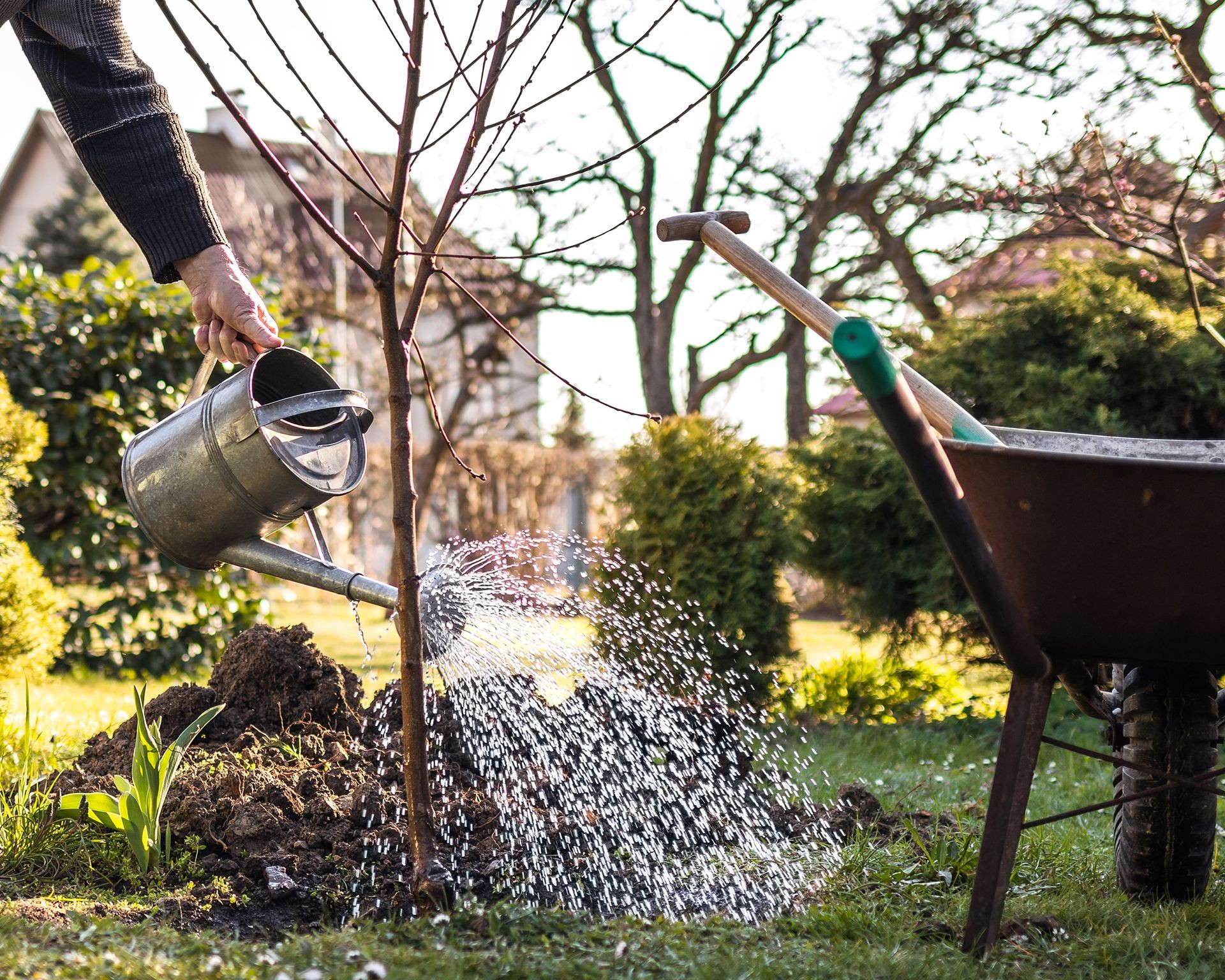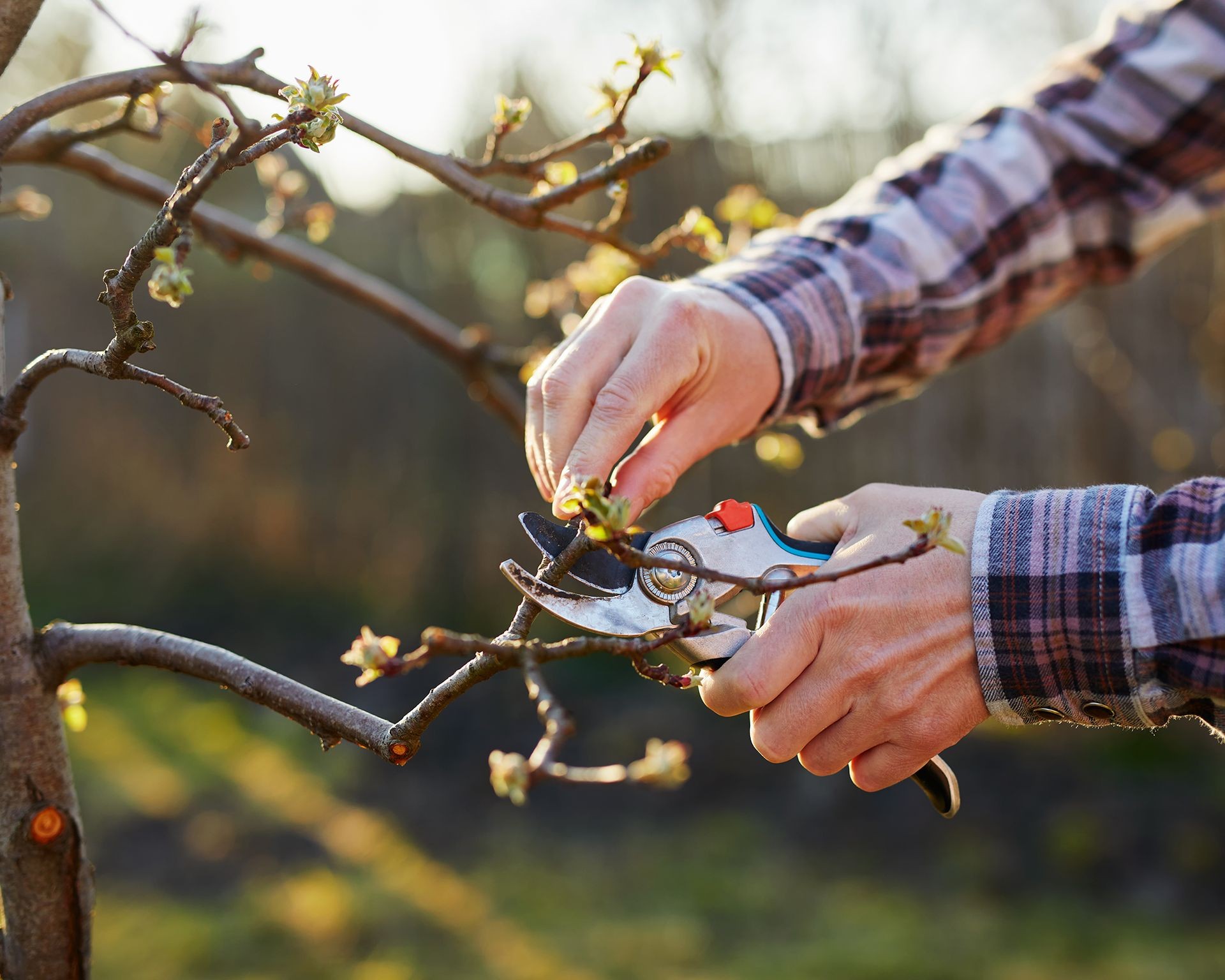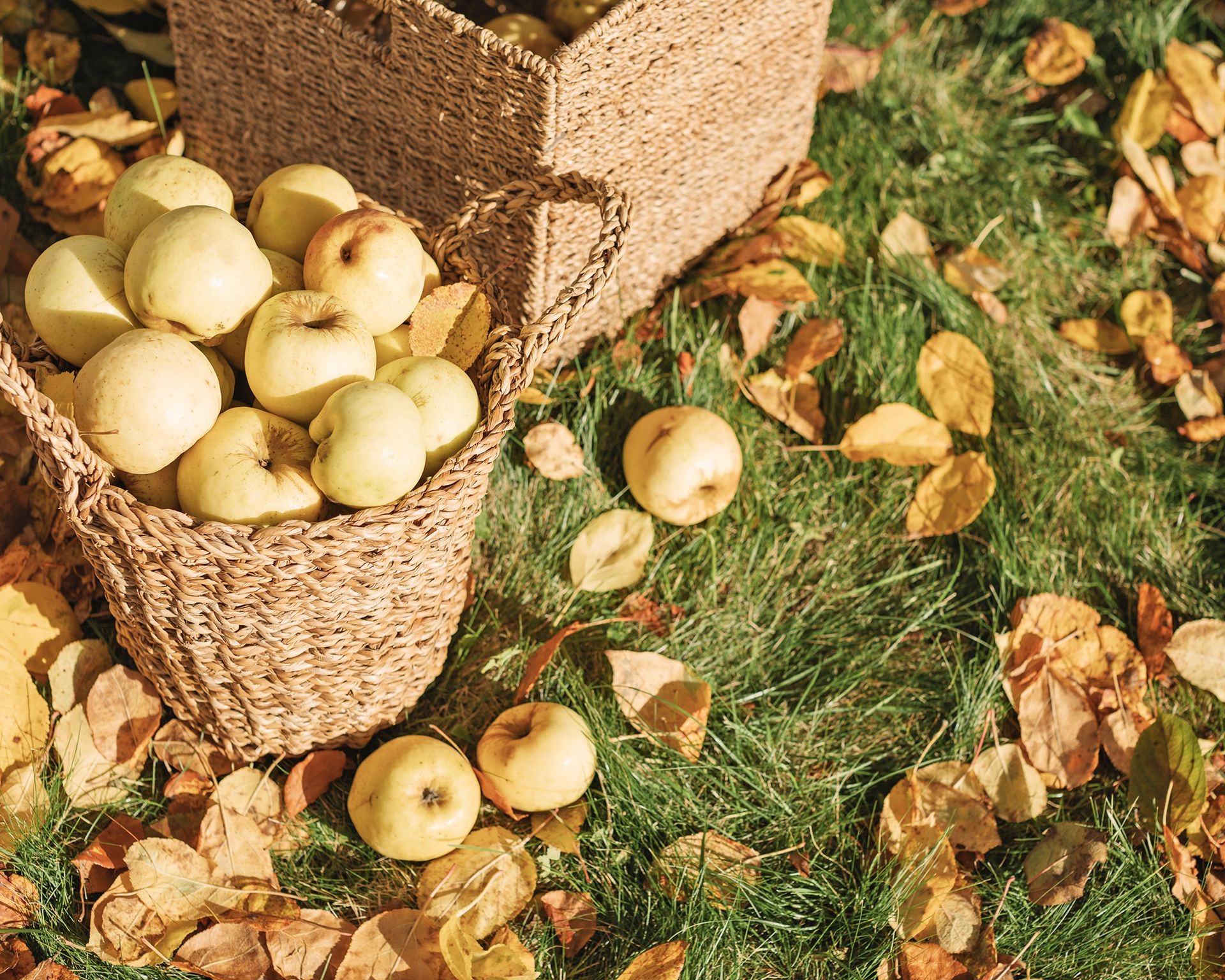No products in the cart.
NEWS
Mastering Fall Fruit Tree Care: Avoid These Mistakes
Fall isn’t just about enjoying the harvest; it’s a vital time for your fruit trees. Proper preparation for winter is crucial for their health and next year’s yield. Many gardeners make common fall fruit tree care mistakes that can lead to serious problems down the line. Drawing on agricultural science and expert knowledge, we’ll explore these frequent errors and how to avoid them, ensuring your trees are resilient and ready to thrive when spring returns.
 Gardener watering the base of a young fruit tree during autumn
Gardener watering the base of a young fruit tree during autumn
1. Neglecting Essential Hydration
One often-overlooked aspect of fall fruit tree care is watering. Even as growth slows, proper hydration before winter is crucial. Water-filled cells within the tree’s tissues provide natural insulation against freezing; dehydrated cells are vulnerable, risking damage when they freeze and burst. This can cause irreversible harm to vital structures like the trunk and branches. Continue regular watering until just a few weeks before the ground freezes solid, but stop just before freezing temperatures arrive to prevent ice accumulation around the roots.
2. Failing to Protect the Root System
Protecting delicate roots from freezing is paramount as temperatures drop. Applying mulch is an essential practice in fall fruit tree care for insulation. A two-inch layer of organic material like wood chips or arborist mulch provides excellent protection. When applying mulch, always create a “donut” shape, keeping it a few inches away from the trunk to avoid moisture buildup that can lead to rot. Extend the mulch layer outwards, ideally to the edge of the tree’s canopy where feeder roots are concentrated. Be mindful of the mulch type; avoid fresh compost, which can stimulate undesirable late-season growth, and thick straw layers that can attract rodents seeking shelter, potentially damaging bark.
 Close-up of gardener carefully pruning a fruit tree branch with secateurs
Close-up of gardener carefully pruning a fruit tree branch with secateurs
3. Pruning Trees at the Wrong Time
While pruning is vital for fruit tree structure and productivity, timing is critical. Many novice growers might be tempted to prune in the fall, but this is widely considered the least advisable time. Fall pruning creates wounds that heal slowly, if at all, as the tree prepares for dormancy. It can also stimulate a flush of tender new growth highly susceptible to damage from winter frosts. This not only weakens the tree but leaves open wounds vulnerable to pests and diseases that can overwinter. Instead, save major pruning for early spring (encouraging vigorous growth) or early to mid-summer (managing tree size). Skipping fall pruning helps avoid winter damage and potential pathogen entry.
4. Relying on Synthetic Fertilizers in Fall
The common practice of applying strong commercial fertilizers in the fall can be detrimental to the long-term health of your fruit trees and the soil ecosystem. These synthetic products often bypass the natural soil organisms essential for making nutrients available to trees gradually. Over-reliance on chemical inputs can diminish beneficial microbial populations, making trees unnaturally dependent on artificial feeding. Applying a general mix without knowing your soil’s specific needs (via a soil test) can add unnecessary nutrients, potentially harming trees. A natural approach is better. Boost fertility with compost or well-rotted manure in early spring, applying about two inches thick around the root zone, kept back from the trunk. While fall mulch adds nutrients, its main role after dormancy is insulation.
 Fallen apples and leaves littering the ground near baskets of harvested fruit, highlighting the need for cleanup
Fallen apples and leaves littering the ground near baskets of harvested fruit, highlighting the need for cleanup
5. Leaving Fallen Leaves and Fruit on the Ground
Leaving organic matter to decompose might seem appealing, but it’s a risky practice with fruit trees in the fall. Fallen leaves and fruit, if diseased or infested, become perfect overwintering sites for pathogens and insects. Problems like apple scab, cedar apple rust, fire blight, and black knot are known to overwinter in infected plant debris. Similarly, fallen fruit attracts unwanted pests like wasps and rodents. A thorough cleanup of fallen leaves and fruit around trees and proper disposal (like composting away from the orchard) is a simple but effective measure in fall fruit tree care to significantly reduce next season’s problems.
6. Not Protecting the Trunk
The trunk needs protection from harsh winter sun and potential pests. Winter sunscald occurs when bark warms and expands in the day, then contracts rapidly at night as temperatures drop, causing cracks vulnerable to disease and pests. Protection methods include painting the lower trunk white (a 50/50 white latex paint/water mix) to reflect sun, using commercial white spiral tree guards, or temporarily wrapping with kitchen foil. These methods help regulate bark temperature and provide a physical barrier. Remember to remove plastic guards or foil wraps in early spring before temperatures rise, as they can trap moisture and become ideal breeding grounds for insects.
Fall fruit tree care is not an optional task but a critical investment in the future of your orchard. By avoiding these common pitfalls – ensuring proper hydration, protecting roots with mulch, resisting the urge to prune, prioritizing natural soil health, diligent cleanup, and protecting the trunk – you significantly enhance your trees’ chances of surviving winter strong and healthy. These practices, aligned with a natural and sustainable approach to gardening, lay the foundation for a more productive and resilient harvest next year. Explore the range of natural and organic gardening products and resources available at Biogarden.asia to support your fruit tree care journey through every season.



